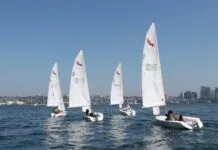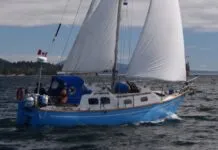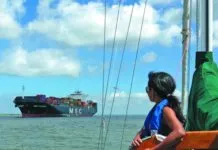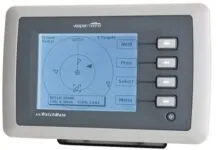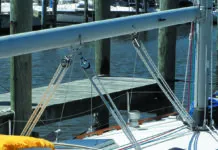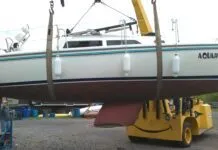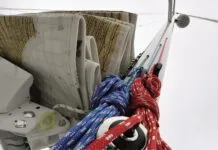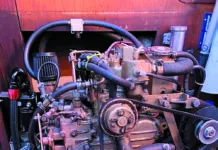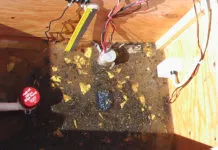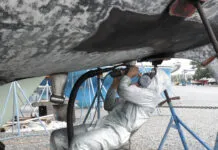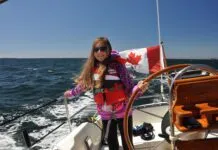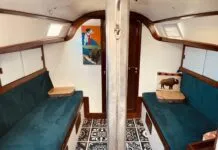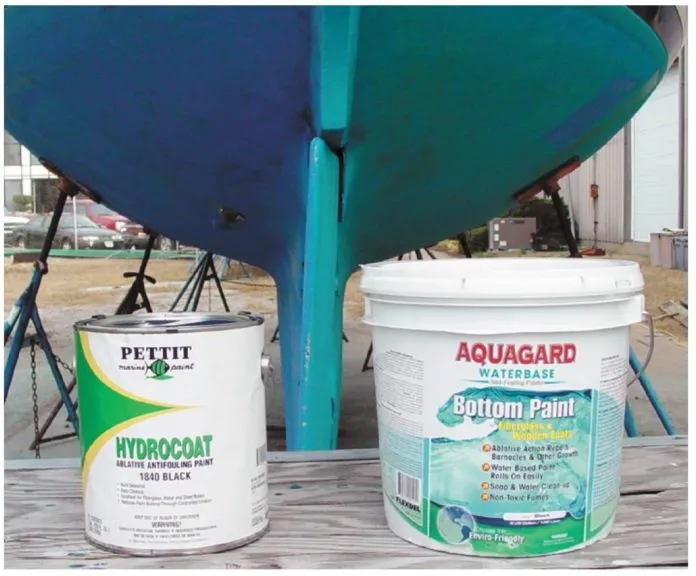Photo by Darrell Nicholson
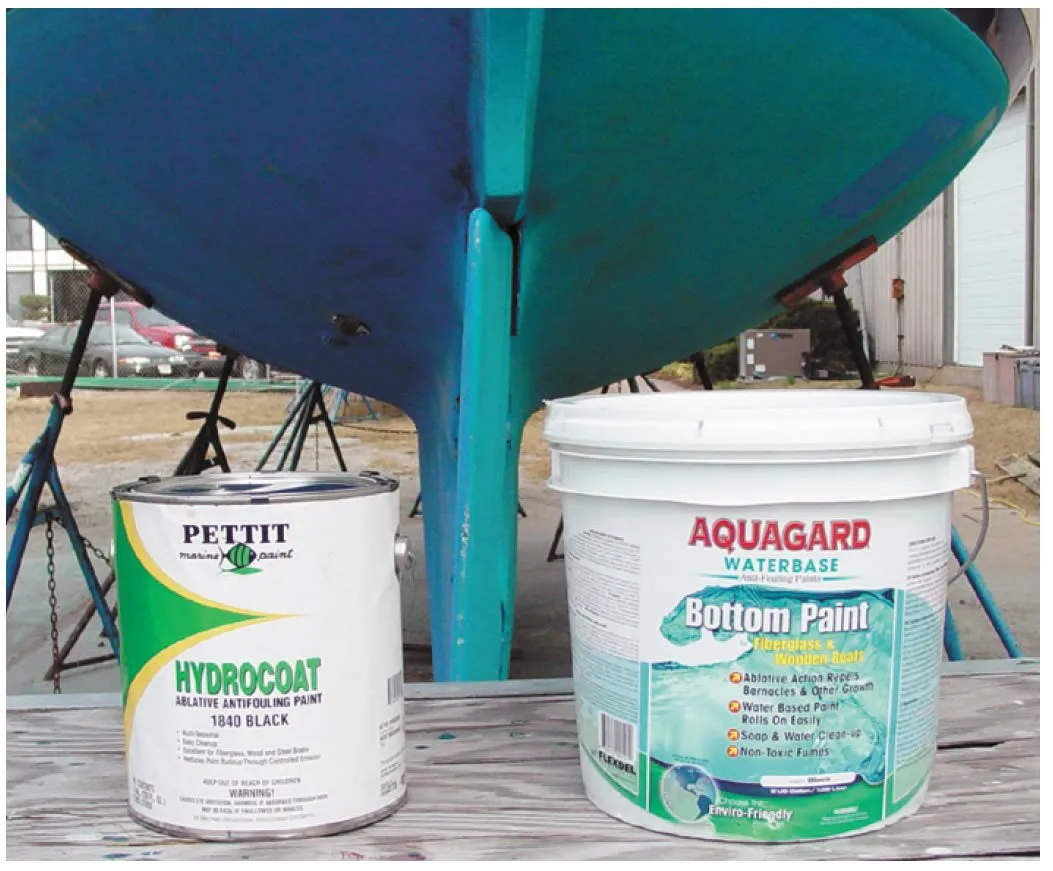
Our test fiberglass panels are taped into sections and paints are applied following the manufacturers instructions. Testers rate the paints with no reference to the paint name or manufacturer.
The finished panels are suspended from a fixed dock so they are about two feet below the water at mean low tide. One complete set is secured to a dock on Sarasota Bay. The other set, featuring only eco-friendly paints, hangs from a dock on Lake Superior.
Although the panels do not move like a boat, the paints are rated after they have been sluiced once with a bucket of water. An Excellent rating is given to paints that show no hard growth and virtually no soft growth. A Poor rating is reserved for paints with hard growth or very heavy soft growth. In between, are the Good and Fair ratings, which are based on how much soft growth a paint has relative to the field. Good paints have no hard growth and a minimal amount of soft growth. Fair paints will clearly have more soft growth than a panel rated Good.
Editors identify overall winners and the top paints in the various categories. They also search the Internet to find the lowest price for each paint so they can be compared on a per-dollar basis. However, prices can change without notice, so we recommend checking before you buy.
Practical Sailor has generally found its field tests to be consistent with the panel results, but antifouling effectiveness can vary from boat to boat, year to year, and place to place. How frequently a boat is used (particularly among some ablative paints) and the variety of marine organisms present in a specific area can affect performance. We encourage readers to supplement our data with reports from local experts and other boat owners in your area.



